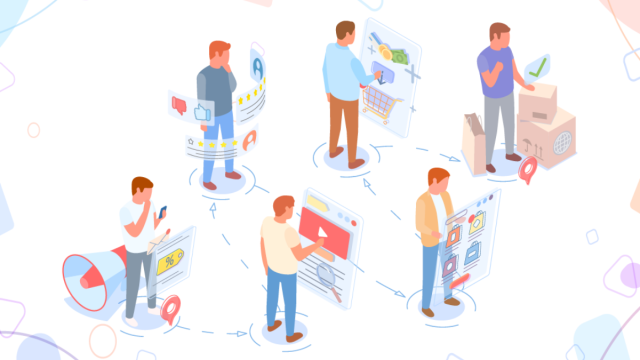‘The customer journey’ is an all too familiar phrase when marketing your business, but what does it actually mean? And how is it connected to your SEO? Do they benefit one another? In this article, we’ll explore the relationship between the two in greater depth…
What is the customer journey?
Contents [show]
The customer journey refers to the process of your customers becoming aware of your brand and how they interact with you during the purchase funnel.
Of course, the term ‘customer journey’ does imply that we should only be tracking those who spend their money with us so we can determine how and why they came to invest their hard earned cash with us in the first place. However, the journey that you should be tracking starts far sooner than that – and it doesn’t always necessarily have to end in a sale.
Remember, every single person who interacts with your brand whether they are a customer or not) has value.
What is the relationship between the customer journey and SEO?
Considering the fact that the customer journey is different for everyone, it doesn’t always relate to SEO in an obvious way. For example, there are many people who may discover or interact with your brand ‘offline’ – whether via word of mouth, by reading a newspaper article, seeing a billboard, or simply stumbling into your store.
All of these little moments will ultimately impact the likelihood of a consumer wanting to interact with and purchase from your brand in the future. And then there’s time and third-party influence, but where does SEO tie in to it all?
For one thing, SEO is an important factor in how a prospect views your brand. These touchpoints occur in ‘organic’ online searches every day.
Here’s a quick look at the buyer journey from the moment of awareness through to purchase:
- Awareness
- Interest
- Consideration
- Intent
- Evaluation
- Purchase
Each of those steps can potentially have “search” associated with it. For example;
- Awareness: stumbling upon your brand during a Google search for similar products or services.
- Interest: a follow up search could be something like: “is [YourCompanyName] a reputable brand?” This is where they will encounter various online reviews across multiple platforms.
- Consideration: by this point, your prospects could be exploring your website and considering the ‘pros and cons’. The more valuable content you have that addresses their pain points and offers solutions, the better.
- Intent & evaluation: now your prospects will likely be comparing your brand to your competitors and evaluating as to whether or not they intend to make a purchase.
- Purchase: and finally, based on all of the information collected, they have decided to go ahead, make a purchase, and hopefully become a loyal, returning customer.
Of course, the key to keeping a customer loyal lies in your SEO as well. For example, if they have further questions about your products or services after the fact, how much in the way of information can they find on your website? Do you have an extensive FAQ section and a blog filled with all manner of tutorials? The more ‘free value’ you can provide, the far more likely they will be to be satisfied and loyal.
Conclusion
While this is merely scraping the surface of SEO in relation to the customer journey, you can clearly see that there is a valuable correlation that you can leverage to your advantage. Ultimately, the more high-value content you have on your website, including an intuitive design with user-friendly UX, the more your SEO will benefit, and the better the overall customer journey will be.
If this is something you are interested in exploring further, it’s well worth finding a reputable SEO agency to invest in. They can help you both maximise your SEO potential, and fine-tune your customer journey across the board.


